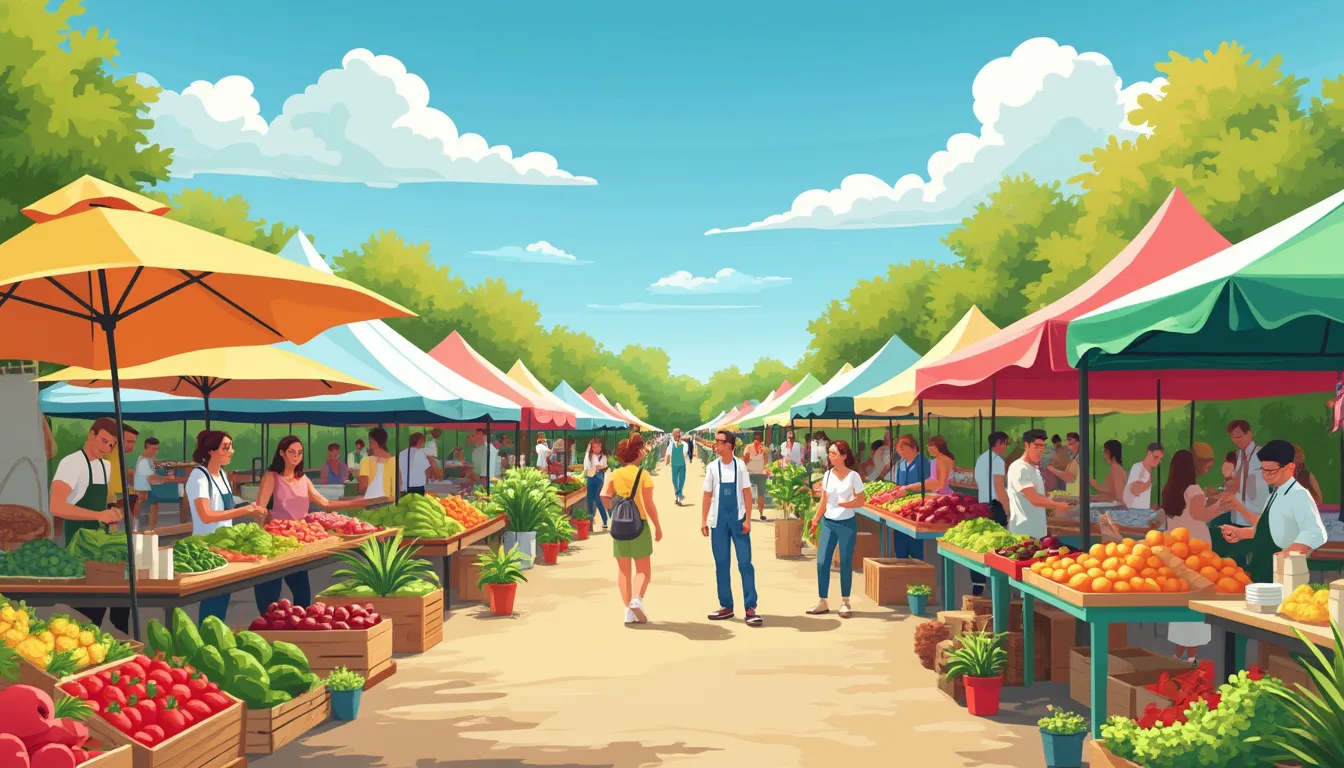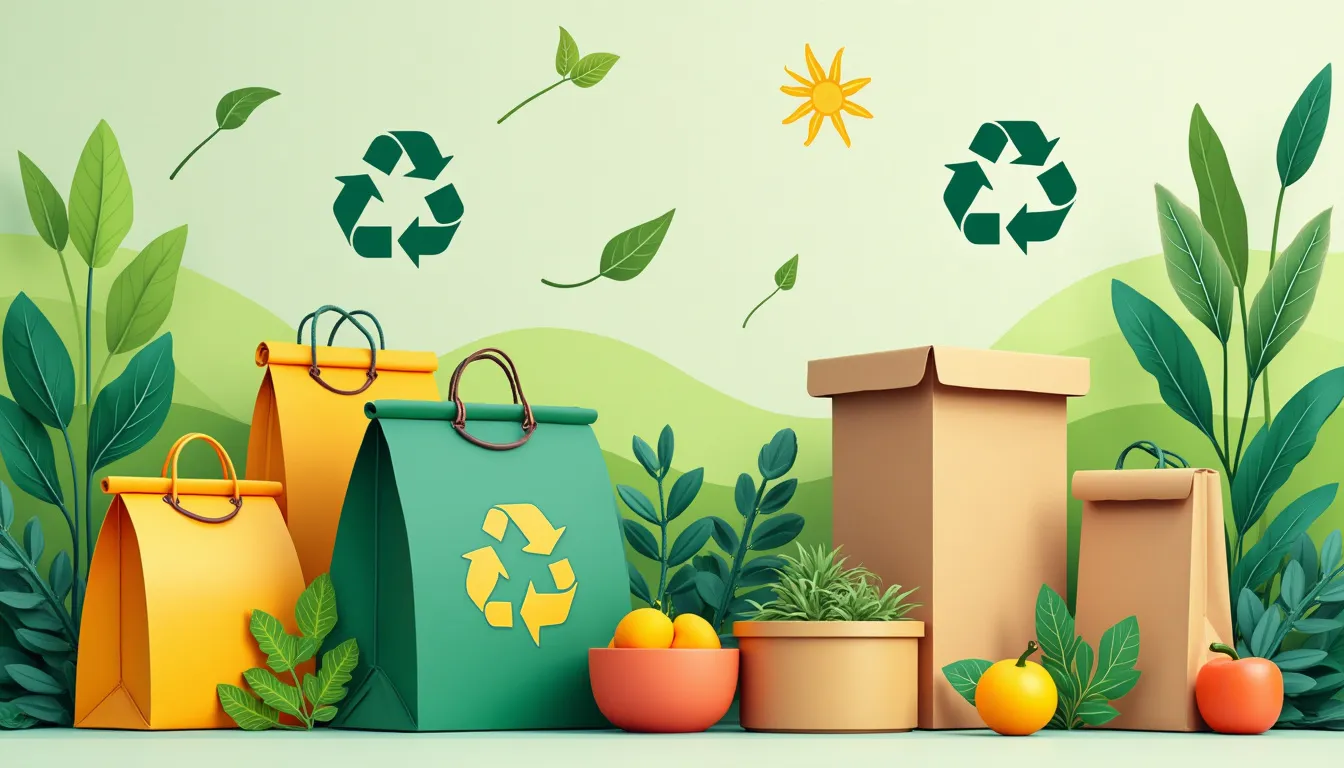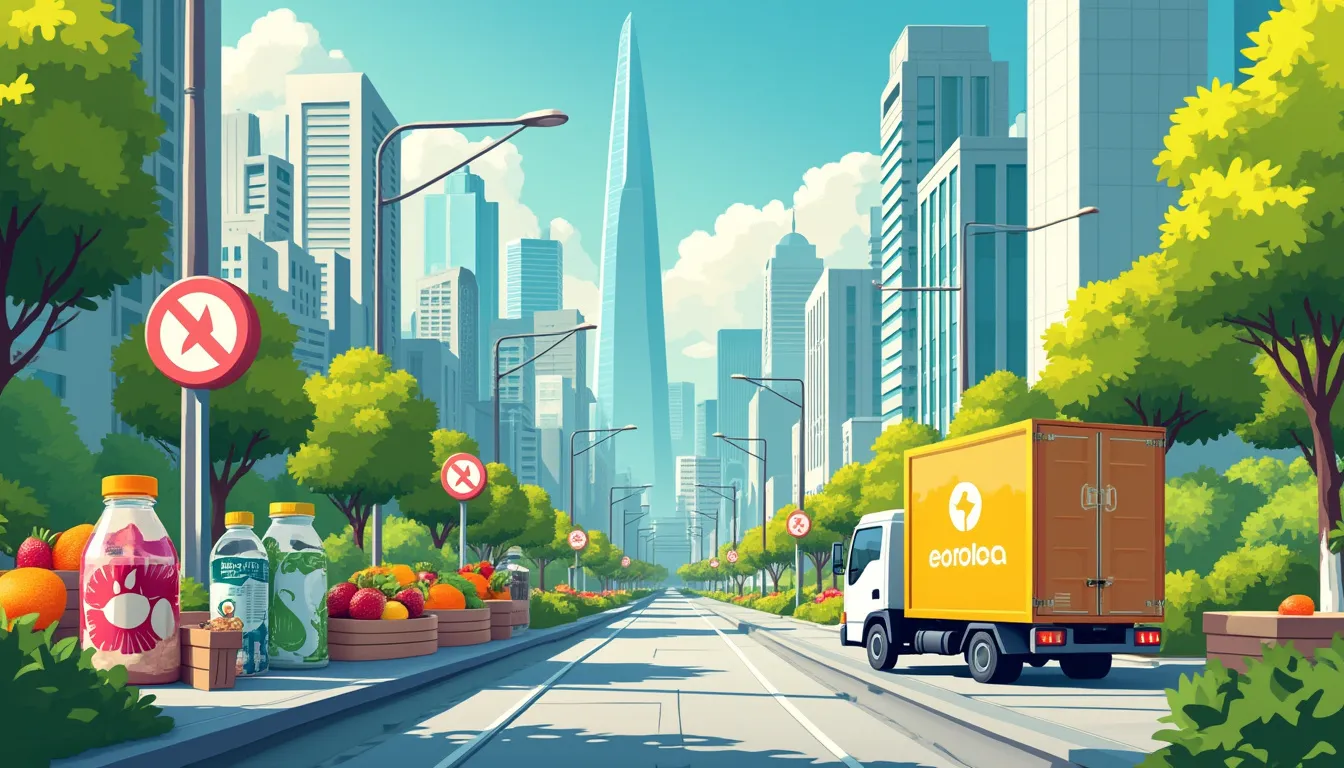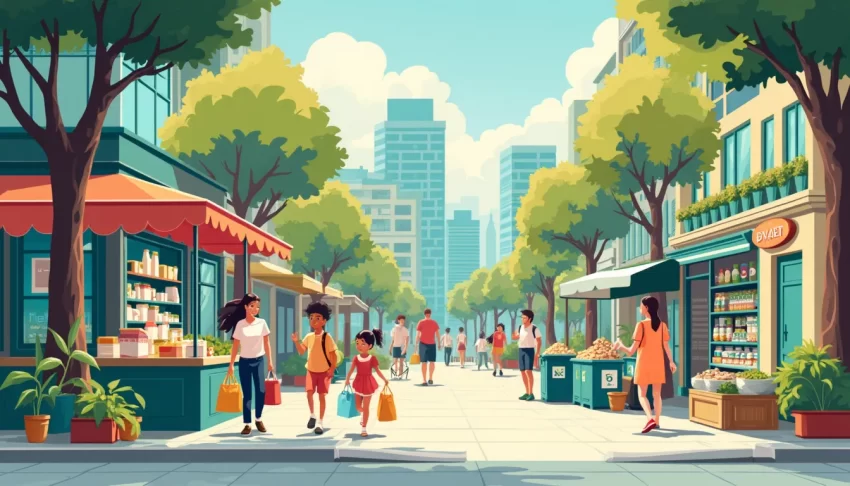In a world increasingly aware of environmental challenges, eco friendly packaging has emerged as a beacon of hope for a sustainable future. With mountains of waste and plastic pollution causing havoc on our oceans, lands, and health, the call for sustainable practices in packaging has never been more pressing.
Eco friendly packaging, which encompasses materials and methods that minimize environmental impact, is not just a trend—it’s a revolution. Businesses and consumers alike are realizing that traditional packaging methods are unsustainable, paving the way for innovative solutions that protect the planet while meeting market demands.
The importance of sustainable practices in packaging cannot be overstated. Packaging is ubiquitous in our daily lives—every product we purchase comes encased in some form of packaging. Therefore, rethinking how we package goods can have a monumental impact on reducing waste and conserving resources. As we delve into the world of eco friendly packaging, we’ll explore current trends, the myriad benefits, and the exciting technological advancements that are shaping the future.
Current trends in eco friendly packaging show a promising shift. Companies are increasingly using biodegradable materials, enhancing recyclability, and even exploring compostable options. These trends are driven not just by environmental necessity but also by consumer preference; today’s buyers are more informed and conscious about the ecological footprint of their purchases.
Join us on this journey as we examine the rise of eco friendly packaging, its benefits, the innovative materials making waves in the industry, and the steps businesses can take to adopt these sustainable practices. By embracing eco friendly packaging, we can all play a part in crafting a more sustainable future, one package at a time.
Introduction to Eco Friendly Packaging
Overview of Eco Friendly Packaging
Eco friendly packaging, a concept that has gained significant traction in recent years, refers to using materials and production methods that have minimal environmental impact. These packaging solutions prioritize sustainability and aim to reduce waste, lower carbon footprints, and conserve resources. Unlike traditional packaging, which often relies on non-renewable resources such as plastics, eco friendly packaging uses biodegradable, recyclable, or reusable materials. Examples include paper, cardboard, bioplastics, and even innovative options like mushroom-based packaging.
Eco friendly packaging has evolved from being a niche market to becoming a central focus for businesses and consumers alike. Companies are increasingly recognizing that sustainable packaging is not only good for the planet but also essential for staying competitive in a market where consumers are more environmentally conscious than ever.
Importance of Sustainable Practices in Packaging
Sustainable practices in packaging are no longer optional—they are a necessity. The traditional packaging industry has long been a significant contributor to environmental degradation. For instance, it’s estimated that the production and disposal of plastic packaging contribute to approximately 8% of the global greenhouse gas emissions. Moreover, plastic waste is notorious for its persistence in the environment, often taking hundreds of years to decompose and posing a threat to wildlife and marine ecosystems.
Adopting eco friendly packaging practices can mitigate these harmful impacts. By using materials that break down more easily and require less energy to produce, businesses can significantly reduce their carbon footprints. Additionally, sustainable packaging can promote a circular economy, where materials are continually reused and recycled, reducing the reliance on virgin resources.
From a business perspective, integrating sustainable practices in packaging can foster brand loyalty and trust. Consumers today are more informed and concerned about the environmental impact of their purchases. According to a 2021 survey by Deloitte, more than 60% of consumers in the U.S. have expressed a preference for purchasing from brands that offer sustainably-produced goods. By prioritizing eco friendly packaging, companies can not only contribute to environmental conservation but also align with consumer values and expectations.
Current Trends in Eco Friendly Packaging
The landscape of eco friendly packaging is continuously evolving, driven by technological advancements, regulatory changes, and shifting consumer preferences. Here are some of the most prominent trends shaping the future of sustainable packaging:
1. Growth of Biodegradable and Compostable Materials
One of the significant trends in eco friendly packaging is the rise of biodegradable and compostable materials. These materials break down more easily in natural environments, reducing the long-term impact of waste. Biodegradable plastics, for example, decompose more rapidly than conventional plastics, making them a popular choice for everything from food packaging to single-use items like cutlery and straws. Similarly, compostable materials are designed to decompose in composting facilities, turning waste into valuable organic matter that can enrich soils.
2. Increase in Reusable Packaging Solutions
Another trend is the shift towards reusable packaging. More businesses are adopting models that encourage consumers to return packaging for reuse. For instance, some grocery stores have introduced reusable produce bags and containers, while restaurants and cafes are offering incentives for customers to bring their own cups or containers. Companies in the beauty and personal care industries are also exploring refill stations and reusable containers to minimize single-use packaging waste.
3. Advances in Recycling Technologies
Recycling technology is also experiencing significant advancements, making it easier to recycle materials that were previously challenging to process. Innovations such as chemical recycling are enabling the breakdown of complex plastics into their original monomers, which can then be used to create new products. These technologies are expanding the range of materials that can be effectively recycled, thus supporting a more robust circular economy.
4. Smart Packaging Innovations
Smart packaging—integrating technology to enhance the functionality and sustainability of packaging—is another exciting trend. This can include packaging that monitors the freshness of food, reducing spoilage and waste, or materials that change properties based on environmental conditions to extend the shelf life of products. These innovations not only contribute to sustainability but also add value for consumers by enhancing convenience and product quality.
5. Legislation and Corporate Commitments
Legislative measures and corporate commitments are also driving the adoption of eco friendly packaging. Governments worldwide are implementing stricter regulations to reduce plastic waste and promote sustainable practices. For example, the European Union has introduced legislation to ban certain single-use plastics and mandate recyclable packaging by 2030. Concurrently, many corporations are setting ambitious sustainability goals, aiming to make their packaging 100% recyclable, reusable, or compostable within the next decade.
In summary, the importance of sustainable practices in packaging cannot be overstated. Businesses that embrace eco friendly packaging not only contribute to environmental preservation but also meet the growing demand for responsible consumption. As trends continue to evolve, the adoption of innovative, sustainable packaging solutions will be crucial in paving the way toward a more sustainable future.

Benefits of Eco Friendly Packaging
When we talk about eco friendly packaging, we’re not just discussing a fleeting trend; we’re looking at a transformative shift in how we approach both production and consumption. Embracing eco friendly packaging offers numerous benefits, not only for the environment but also for businesses and consumers alike. Let’s delve into some of the key advantages that this sustainable practice brings.
Environmental Impact Reduction
The most immediate benefit of eco friendly packaging is its positive effect on the environment. Traditional packaging materials, particularly plastics, are notorious for their long decomposition times and their propensity to pollute waterways and landscapes. In contrast, eco friendly packaging made from materials such as recycled paper, bioplastics, and plant fibers can significantly reduce waste. For instance, biodegradable materials break down naturally and return to the ecosystem without leaving harmful residues.
By reducing the volume of waste ending up in landfills, we also lower greenhouse gas emissions. According to the Environmental Protection Agency (EPA), municipal solid waste landfills are the third-largest source of human-related methane emissions in the United States. By utilizing eco friendly packaging, we can help mitigate this issue. Moreover, many eco friendly materials require less energy to produce, further decreasing the carbon footprint associated with packaging production.
Cost Efficiency and Business Advantages
It’s easy to assume that eco friendly packaging may be more costly than conventional options. However, this isn’t always the case. In many instances, sustainable packaging can lead to significant cost savings. For example, using lightweight materials reduces shipping costs, as it costs less to transport goods with lighter packaging. Additionally, companies can often take advantage of tax incentives or grants aimed at promoting environmentally friendly practices.
Businesses that adopt eco friendly packaging also enjoy enhanced brand reputation and customer loyalty. In today’s competitive market, consumers are increasingly favoring companies that demonstrate a commitment to sustainability. A study by Nielsen found that 66% of global consumers are willing to pay more for products from brands committed to positive social and environmental impact. By switching to eco friendly packaging, businesses can attract these eco-conscious consumers, potentially boosting sales and market share.
Consumer Preferences and Market Demand
Modern consumers are better informed and more environmentally conscious than ever before. They actively seek out products that align with their values, and packaging plays a pivotal role in their purchasing decisions. A survey conducted by Trivium Packaging revealed that nearly 74% of consumers said they would pay more for sustainable packaging. This highlights a significant shift in market demand, as people are not just looking for high-quality products but also for responsible packaging.
Another noteworthy trend is the growing expectation for transparency from brands. Consumers want to know not only what ingredients are in the products they buy but also how those products are packaged and disposed of. Brands that communicate their commitment to sustainability effectively can build stronger, trust-based relationships with their audience. This transparency can be conveyed through clear labeling on packaging, information on websites, or marketing campaigns that highlight the eco friendly strategies of the company.
In addition to individual consumer preferences, there is also a broader push from retailers. Major retailers are setting sustainability standards, requiring suppliers to comply with eco friendly practices, including sustainable packaging. This not only demonstrates a market shift towards greener choices but also indicates that businesses must adapt to remain competitive and relevant.
Clearly, the benefits of eco friendly packaging extend beyond environmental sustainability. They encompass cost savings, enhanced business reputation, and alignment with market demands, positioning both businesses and consumers to thrive in a more sustainable future.

Innovations in Eco Friendly Packaging Materials
Biodegradable and Compostable Options
One of the most exciting areas of innovation in eco friendly packaging is the development of biodegradable and compostable materials. Unlike traditional plastics, which can take hundreds of years to decompose, these materials break down much more quickly and safely in the environment. Companies like NatureWorks are leading the charge with their Ingeo biopolymer, a plant-based plastic alternative that fully composts in industrial facilities. And it’s not just niche products – major brands like Coca-Cola are experimenting with biodegradable bottles.
For instance, the brand Vegware offers a complete range of compostable food packaging that’s made from plant-based materials. Imagine your takeout container not only being convenient but also contributing to an earth-friendly cycle as it decomposes into nutrient-rich soil. Choosing biodegradable or compostable options allows both businesses and consumers to reduce their environmental footprint significantly.
Reusable and Recyclable Packaging Solutions
Another leap in eco friendly packaging involves reusable and recyclable solutions. These options not only reduce waste but also promote a circular economy where materials are continuously repurposed. For example, Loop is an innovative shopping platform that partners with major brands to offer products in durable, reusable packaging. When customers finish with a product, they simply return the empty container for cleaning and reuse. This system is like a modern-day milkman service but for a wide range of everyday items.
On the recyclable front, innovations in materials technology are making it easier to recycle packaging components. For example, LiquiGlide creates non-stick coatings that ensure product residues don’t get wasted and containers can be more efficiently emptied and recycled. Moreover, companies such as Coca-Cola and PepsiCo are investing heavily in developing bottles made from 100% recycled PET, moving the industry towards a more sustainable future.
Technological Advancements in Sustainable Materials
The world of tech isn’t lagging when it comes to eco friendly packaging. On the contrary, advancements in technology are bringing forth groundbreaking materials that promise both performance and sustainability. Take, for instance, the development of nanocellulose, a material derived from wood fibers. This biodegradable substance is not only incredibly strong but also light, offering multiple applications from food packaging to electronics.
Then there’s the advent of edible packaging. Companies like Loliware are developing seaweed-based packaging materials that can be eaten or composted, providing a zero-waste solution. Imagine indulging in a treat and then consuming the package it came in as well – a true innovation in reducing waste.
Another brilliant example is Paptic, a material combining the properties of paper, plastic, and fabric. This versatile product is designed to be reused multiple times and is also recyclable, offering businesses an attractive and eco-friendly packaging option that satisfies both sustainability and durability requirements.
Even more futuristic are developments like embedded seeds in packaging materials, allowing the packaging to sprout into plants once discarded. While still largely experimental, these imaginative solutions showcase the transformative potential of merging sustainability with cutting-edge innovation.
Real-world Examples of Innovation
To bring these innovations to life, consider the partnership between Dell and the company Ecovative, which led to the development of mushroom-based packaging. Dell now uses this biodegradable material to package some of its servers and computers, proving that high-tech industries can also embrace organic, earth-friendly solutions.
On a more consumer-facing level, consider the brand Ecover, which sells cleaning products in bottles made entirely from recycled ocean plastic. This initiative not only repurposes waste but also cleans up our seas, hitting two significant environmental issues with one impactful solution.
Finally, innovative materials are being leveraged creatively by various industries. Fashion brands, for instance, are rethinking packaging with materials like recycled fabric or biodegradable alternatives. The designer brand Stella McCartney, known for its commitment to sustainability, uses compostable packaging made from corn starch.
By understanding and embracing these innovative materials, businesses of all sizes can make a significant impact. Whether it’s through biodegradable plastics, reusable containers, or next-gen materials like nanocellulose, the strides made in eco friendly packaging are proof that sustainability and practicality can and do coexist.

The Future of Eco Friendly Packaging
Predictions and Projections for the Industry
The future of eco friendly packaging is undeniably bright as it continues to evolve in response to growing environmental concerns and consumer demands. According to a report by Grand View Research, the global market for eco friendly packaging is expected to reach $409.2 billion by 2030, reflecting a compound annual growth rate (CAGR) of 5.1%. This rise is driven by both regulatory pressures and an increased awareness among consumers about the detrimental effects of traditional packaging on the environment.
As businesses and consumers work together towards sustainability, we can expect a significant increase in the use of biodegradable and compostable materials. Packaging made from plant-based sources, like cornstarch and sugarcane, will likely become more mainstream, offering a viable alternative to petroleum-based plastics. Additionally, innovations in material science are paving the way for packaging that not only minimizes environmental impact but also enhances product preservation and shelf life.
Role of Legislation and Corporate Responsibility
Governments around the world are implementing stricter regulations to curb the use of non-recyclable and single-use plastics. The European Union’s Single-Use Plastics Directive, which bans certain single-use plastic products, is a leading example of such legislation. Similar bans and restrictions are being adopted globally, pushing companies to rethink their packaging choices.
Corporate responsibility plays a pivotal role in this transition. Companies like Unilever and Coca-Cola are setting ambitious targets to reduce their plastic usage and increase the percentage of recyclable materials in their packaging. These companies have recognized that sustainable practices are not just a regulatory requirement; they are essential for long-term brand loyalty and consumer trust.
For instance, Unilever has committed to halving the use of virgin plastic in its packaging and collecting and processing more plastic packaging than it sells by 2025. By taking such steps, companies can not only comply with regulations but also lead the industry towards more sustainable practices.
Steps Businesses Can Take to Transition to Eco Friendly Packaging
Transitioning to eco friendly packaging can seem daunting, but with thoughtful planning and a commitment to sustainability, businesses can significantly reduce their environmental footprint. Here are some steps that businesses can take:
1. Conduct a Packaging Audit
The first step towards eco friendly packaging is understanding your current packaging practices. Conduct a thorough audit to assess the materials used, the volume of waste generated, and the recyclability of your packaging. This will provide a baseline from which improvements can be made.
2. Collaborate with Suppliers
Work closely with your packaging suppliers to source sustainable materials. Look for suppliers who offer biodegradable, compostable, and recyclable options. Building strong relationships with eco-conscious suppliers can ensure a steady supply of sustainable packaging materials.
3. Redesign Packaging
Consider redesigning your packaging to use fewer materials without compromising on product protection. Lightweight packaging can reduce transportation costs and carbon emissions. Innovative design can also enhance the consumer experience while being environmentally friendly.
4. Educate Consumers
Consumer education is crucial for the success of eco friendly packaging initiatives. Clearly label your packaging with recycling instructions and promote the environmental benefits of your packaging choices. Educate consumers on how to properly dispose of or recycle packaging to ensure it does not end up in landfills.
5. Invest in R&D
Investing in research and development can lead to breakthrough innovations in sustainable packaging. Collaborate with academic institutions, industry experts, and technology providers to explore new materials and packaging solutions that are both eco-friendly and cost-effective.
6. Monitor and Report Progress
Track the progress of your sustainability initiatives and regularly report your achievements. Transparency in reporting not only builds consumer trust but also helps in identifying areas for further improvement. Consider obtaining certifications like FSC (Forest Stewardship Council) or Cradle to Cradle to demonstrate your commitment to sustainable packaging.
In conclusion, the transition to eco friendly packaging is a journey that requires collaboration, innovation, and a genuine commitment to sustainability. By staying informed about industry trends, adhering to legislation, and taking proactive steps to reduce environmental impact, businesses can contribute to a more sustainable future while meeting the evolving demands of consumers.
As we close our exploration of eco friendly packaging, it’s clear that this movement holds profound potential for a more sustainable future. Embracing eco friendly packaging isn’t just a trend—it’s a fundamental shift toward more responsible and thoughtful consumption patterns. The importance of sustainable practices in packaging is underscored by the growing environmental challenges we face, from overflowing landfills to the drastic impacts of climate change.
Eco friendly packaging brings an array of benefits to the table. Environmental impact reduction sits at the forefront, as biodegradable, compostable, and recyclable materials offer a way to minimize waste and conserve resources. For businesses, the shift to these sustainable practices can lead to cost efficiencies, bolstered brand reputation, and alignment with the increasing market demand for green solutions. Consumers are more informed and conscientious than ever, and their preferences reflect a strong desire for products that do not harm the planet. This changing dynamic is not just a passing phase—it’s a clear signal of what the future holds.
The innovation within the realm of eco friendly packaging is nothing short of inspiring. Materials that were once deemed experimental—such as bioplastics made from plant starches or even algae—are now becoming mainstream. Reusable and recyclable packaging solutions are pushing the envelope, encouraging a circular economy where materials are continuously repurposed rather than discarded. The technological advancements are creating materials that not only meet but often surpass the performance of traditional packaging, proving that sustainability and effectiveness can go hand in hand.
Looking ahead, the future of eco friendly packaging seems bright, but it will require concerted efforts from all sectors. Predictions suggest a significant leap toward greener products, with legislative measures likely driving the adoption of sustainable materials. Corporate responsibility will play a pivotal role, as businesses that take proactive steps will not only comply with regulations but also lead the charge in redefining market standards. Companies can start by conducting audits of their current packaging practices, exploring sustainable alternatives, and collaborating with suppliers committed to eco friendly materials.
For individuals and businesses alike, the message is clear: we all have a part to play. Making small yet impactful changes, such as opting for products with minimal or sustainable packaging, supporting companies prioritizing the planet, and advocating for broader environmental policies, can collectively drive significant progress. Eco friendly packaging is more than an industry shift; it’s a call to action for all of us to rethink our relationship with the environment and take steps, however big or small, toward a greener, more sustainable world.
Support Us: Check out our recommended products on Amazon.

